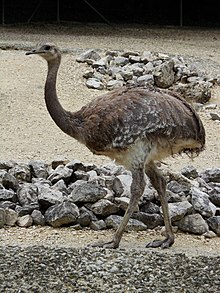Yesterday was a busy day for CABS and the police on Gozo. In the afternoon the Bird Guards of the Committee Against Bird Slaughter (CABS) found a massive illegal cage trap installation in the Wied-Ghasri between Zebbug and Gordan lighthouse with 11 Turtle Doves who had been recently caught. A joint AFM/ALE patrol, alerted by the birdwatchers, deactivated the trap, which was nearly 8 cubic metres in size, and confiscated the birds inside. The Turtle doves have been taken to Malta where they will be rehabilitated and released after the end of the hunting season. “The Turtle dove is one of Europe’s most threatened farmland birds. It is extremely satisfying to know that these eleven birds will soon be flying in the wild again”, CABS team leader Craig Redmond said.
Early on Monday morning a CABS team filmed two young hunters hunting too close to a residential area in Xewkija (Gozo). Both men have been identified by the police and will be taken to court.
 In a separate incident on the same day, a CABS patrol car was blocked in by a hunter near Qala. The hunter approached the birdwatchers, violently shouting and swearing and pushing a female CABS member from Scotland. The man then threatened to kill the team leader of the CABS patrol but luckily the group managed to escape from the situation. Shortly afterwards, the same hunter stopped the CABS members as they were driving in Nadur and again threatened to kill them, swearing at the team leader to ‘go back to his own country´, not only a violent death threat but also a racial slur. Both incidents were reported to the Victoria police station whose officers identified and summoned the aggressor. He admitted to the charges and described himself as being ´frustrated´ because he did not manage to shoot a Turtle Dove that morning. After the man had apologised to the CABS team the birdwatchers abstained from pressing charges against him for the time being. “We told him that if any of our team members on Gozo are attacked or harassed again he will have to stand trial. It is now in his own interest to convince his hunting friends to let us work in peace in ensuring that birds can continue safely on their migration”, Craig Redmond said.
In a separate incident on the same day, a CABS patrol car was blocked in by a hunter near Qala. The hunter approached the birdwatchers, violently shouting and swearing and pushing a female CABS member from Scotland. The man then threatened to kill the team leader of the CABS patrol but luckily the group managed to escape from the situation. Shortly afterwards, the same hunter stopped the CABS members as they were driving in Nadur and again threatened to kill them, swearing at the team leader to ‘go back to his own country´, not only a violent death threat but also a racial slur. Both incidents were reported to the Victoria police station whose officers identified and summoned the aggressor. He admitted to the charges and described himself as being ´frustrated´ because he did not manage to shoot a Turtle Dove that morning. After the man had apologised to the CABS team the birdwatchers abstained from pressing charges against him for the time being. “We told him that if any of our team members on Gozo are attacked or harassed again he will have to stand trial. It is now in his own interest to convince his hunting friends to let us work in peace in ensuring that birds can continue safely on their migration”, Craig Redmond said.










